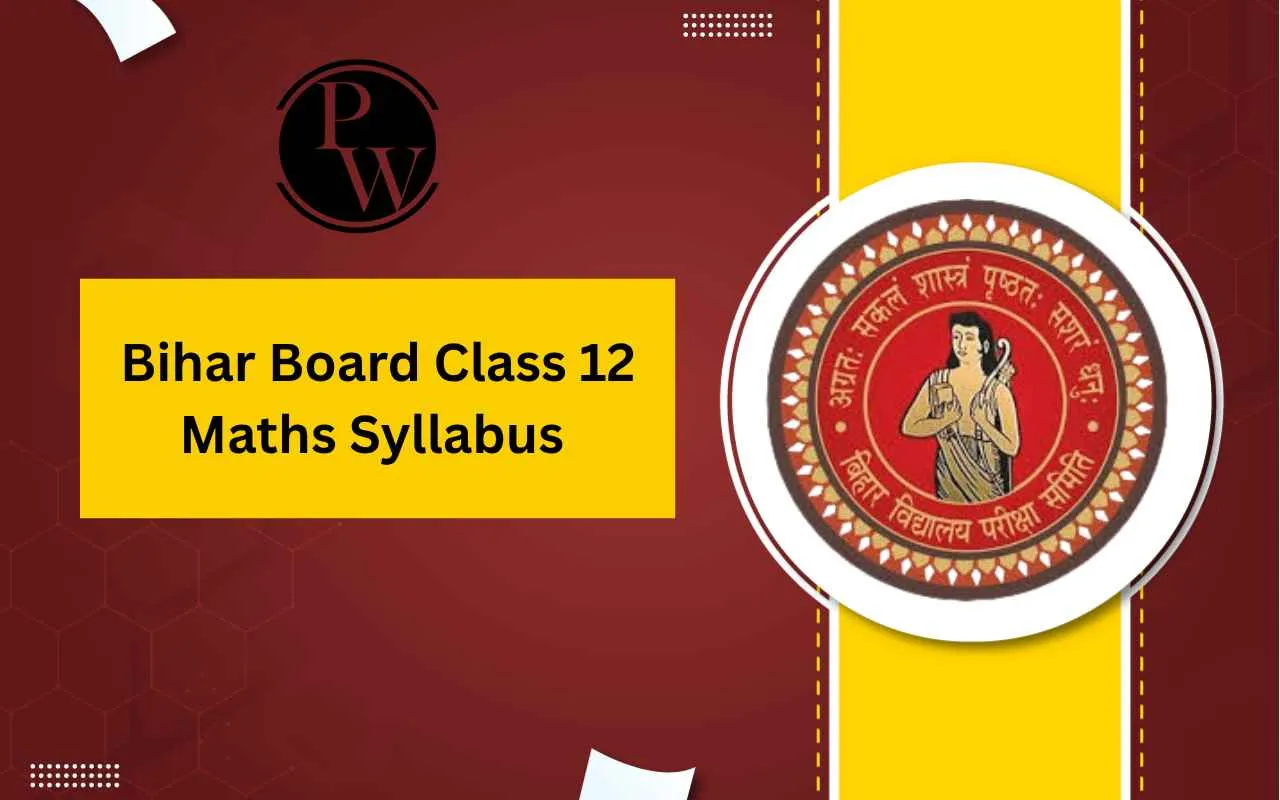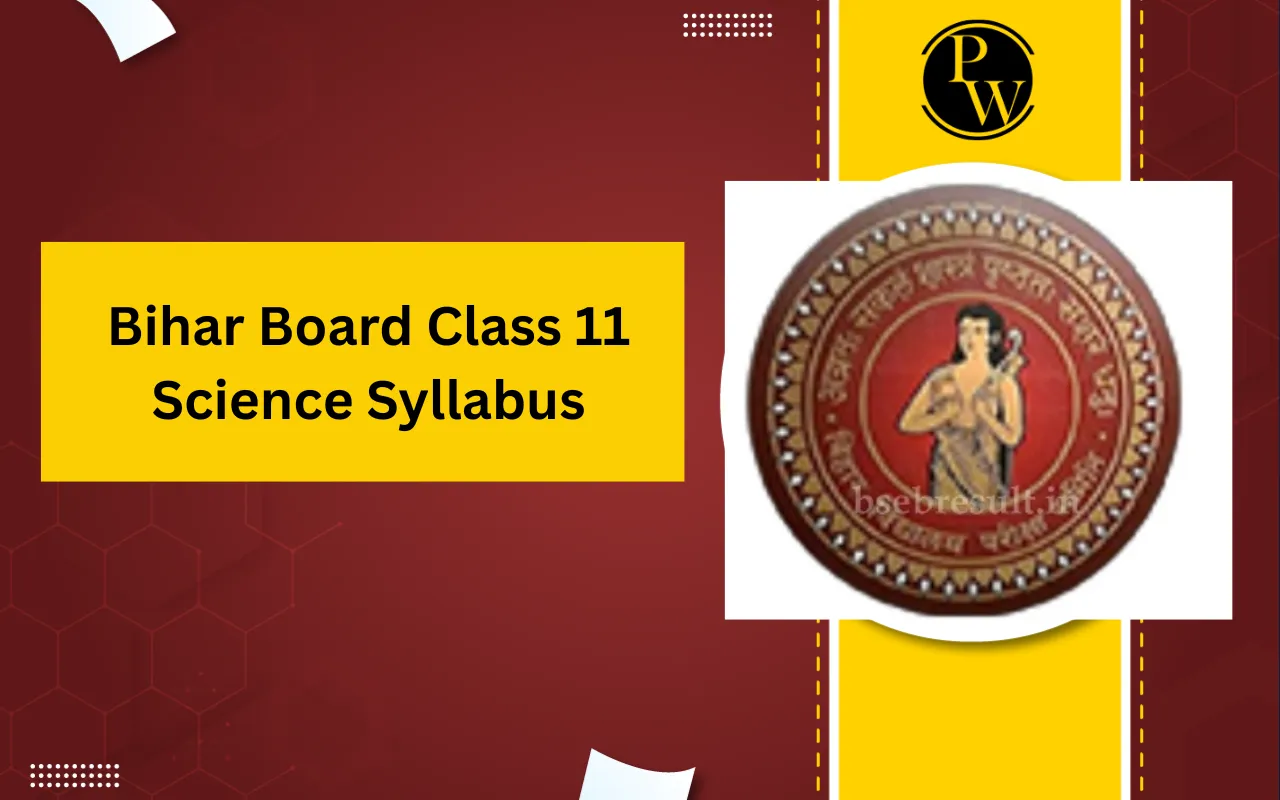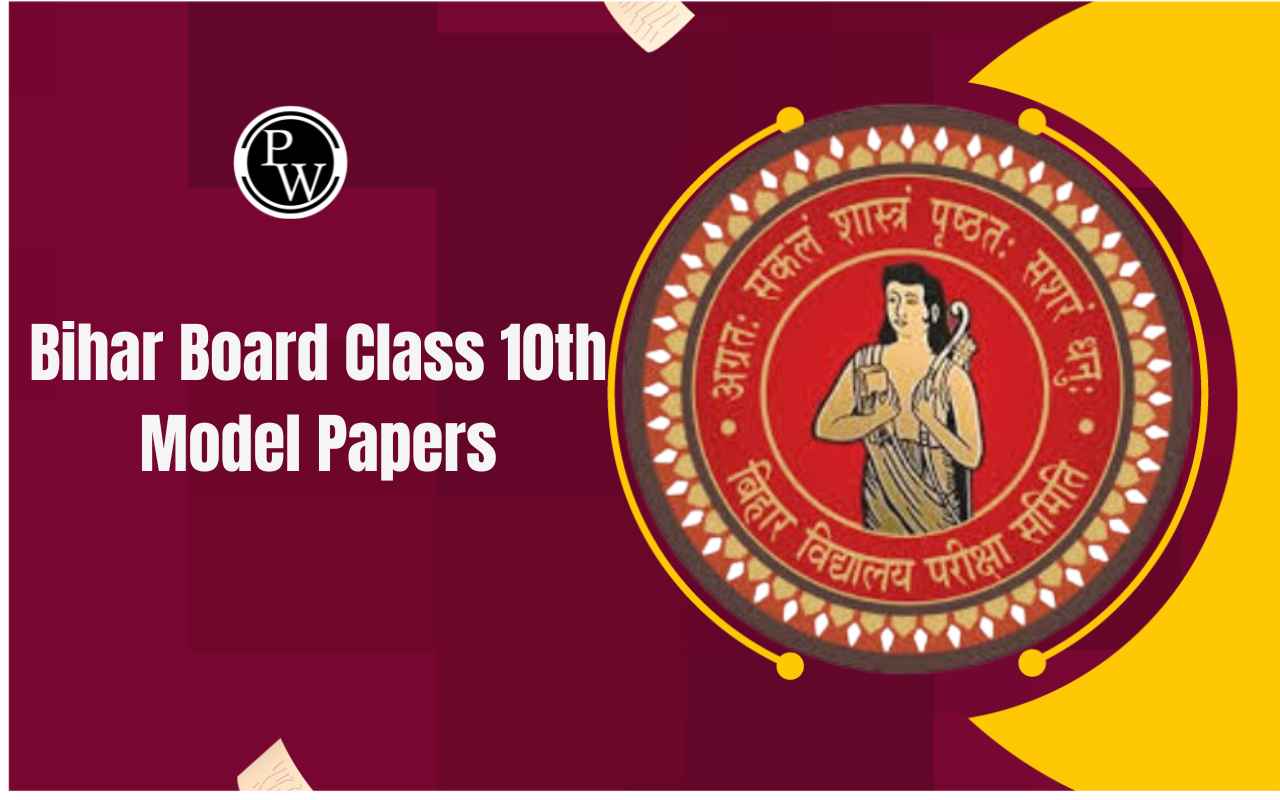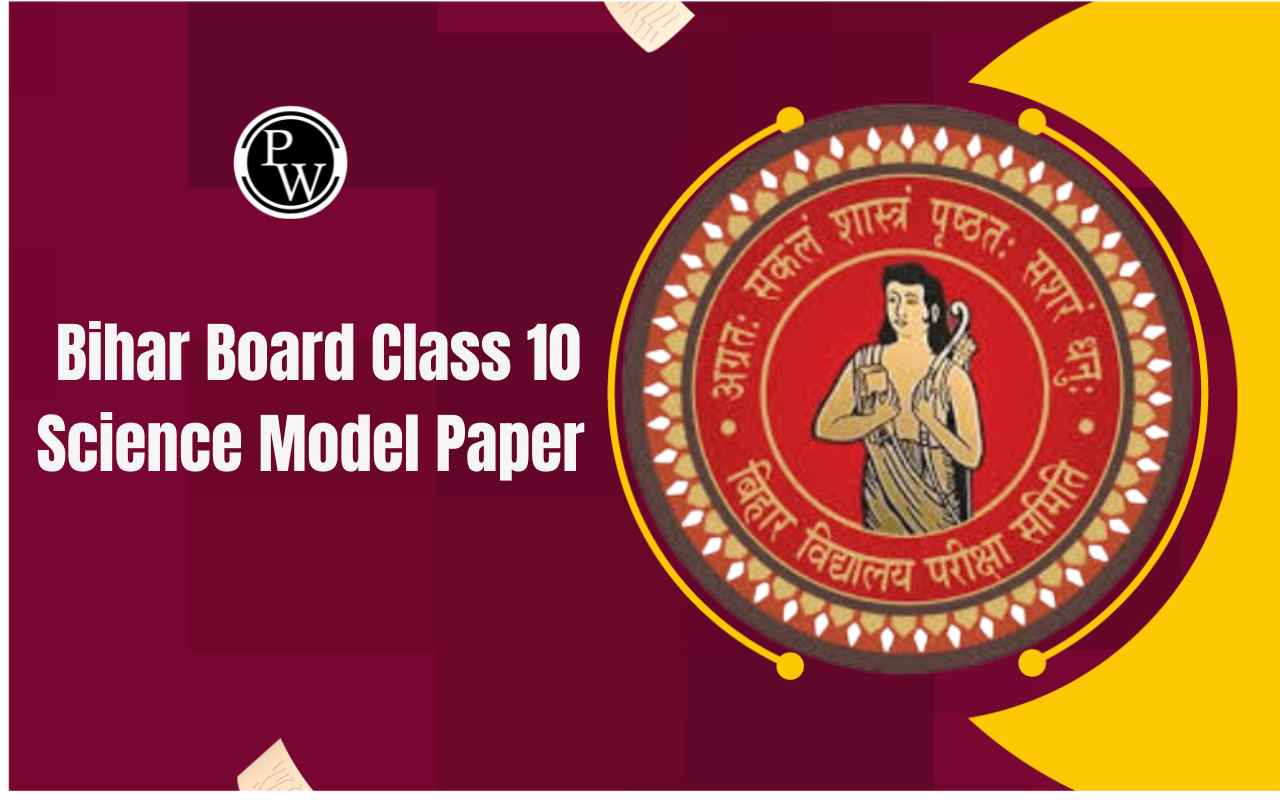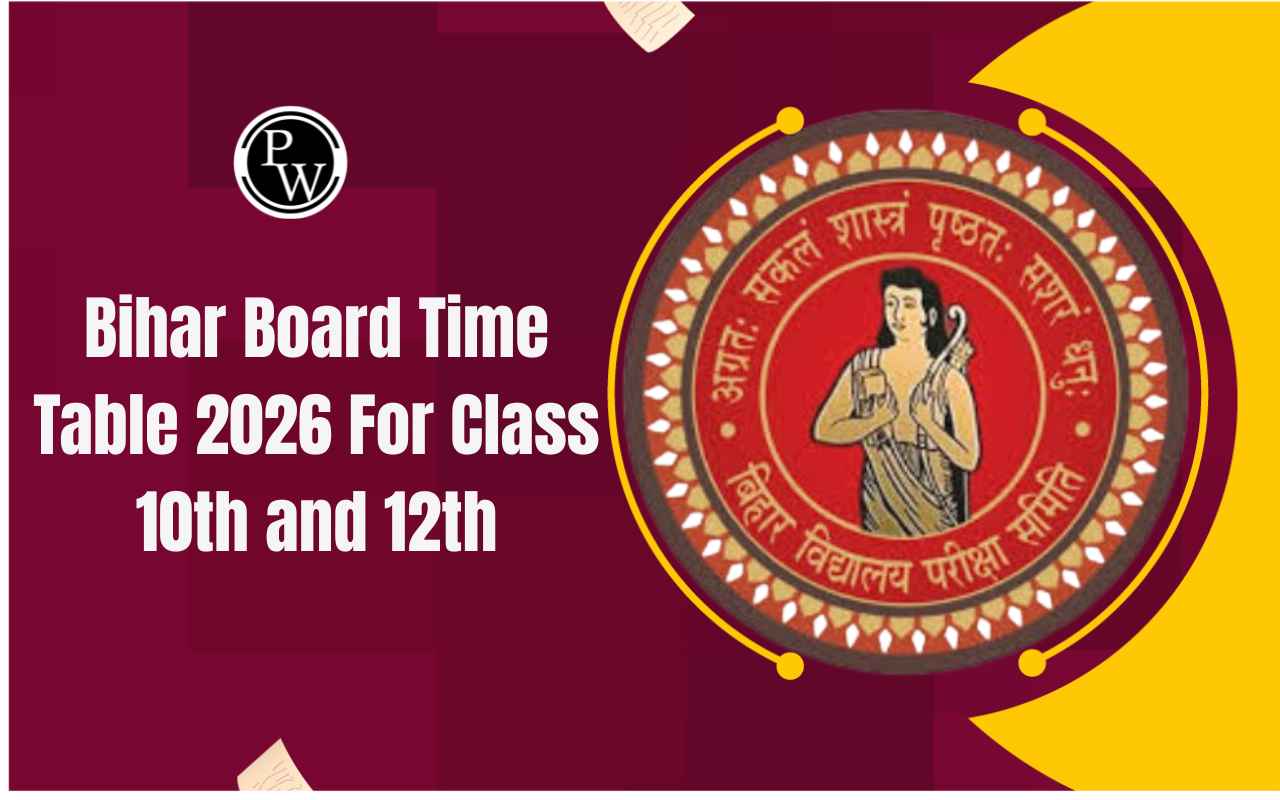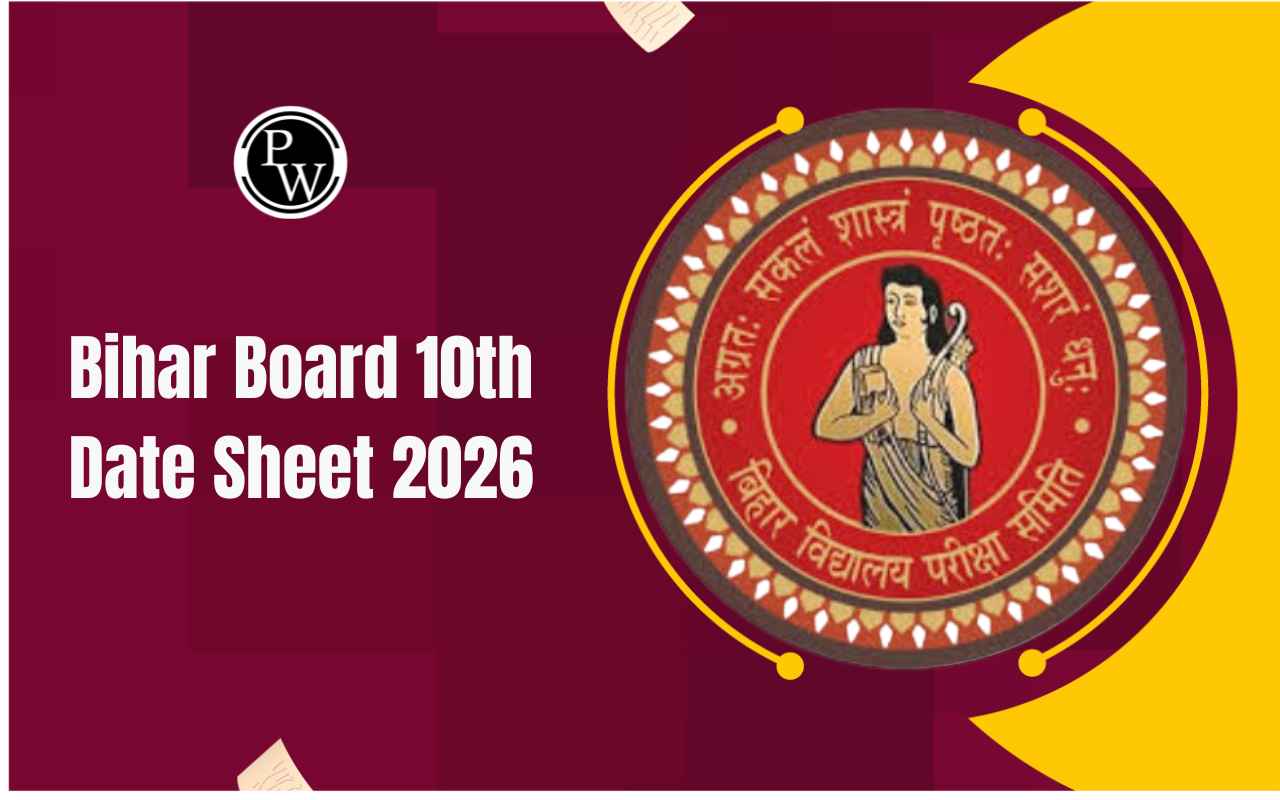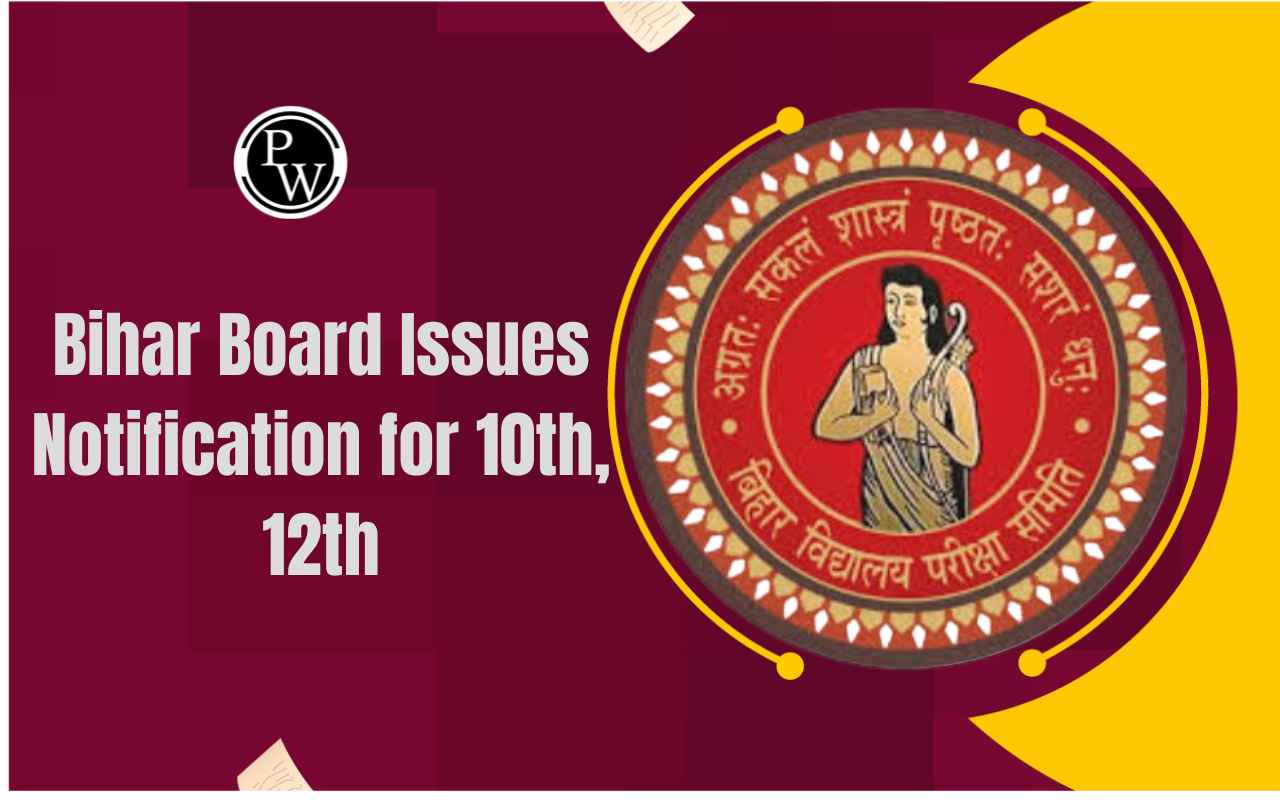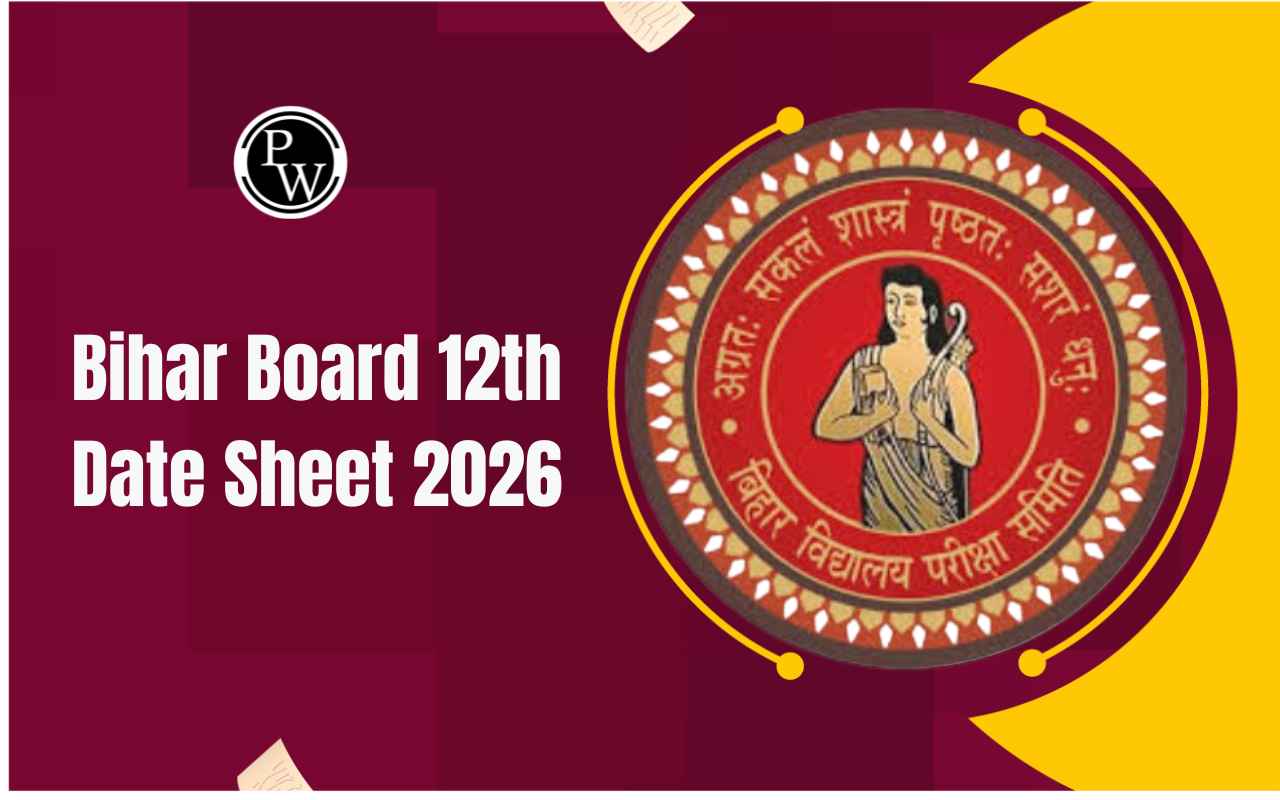
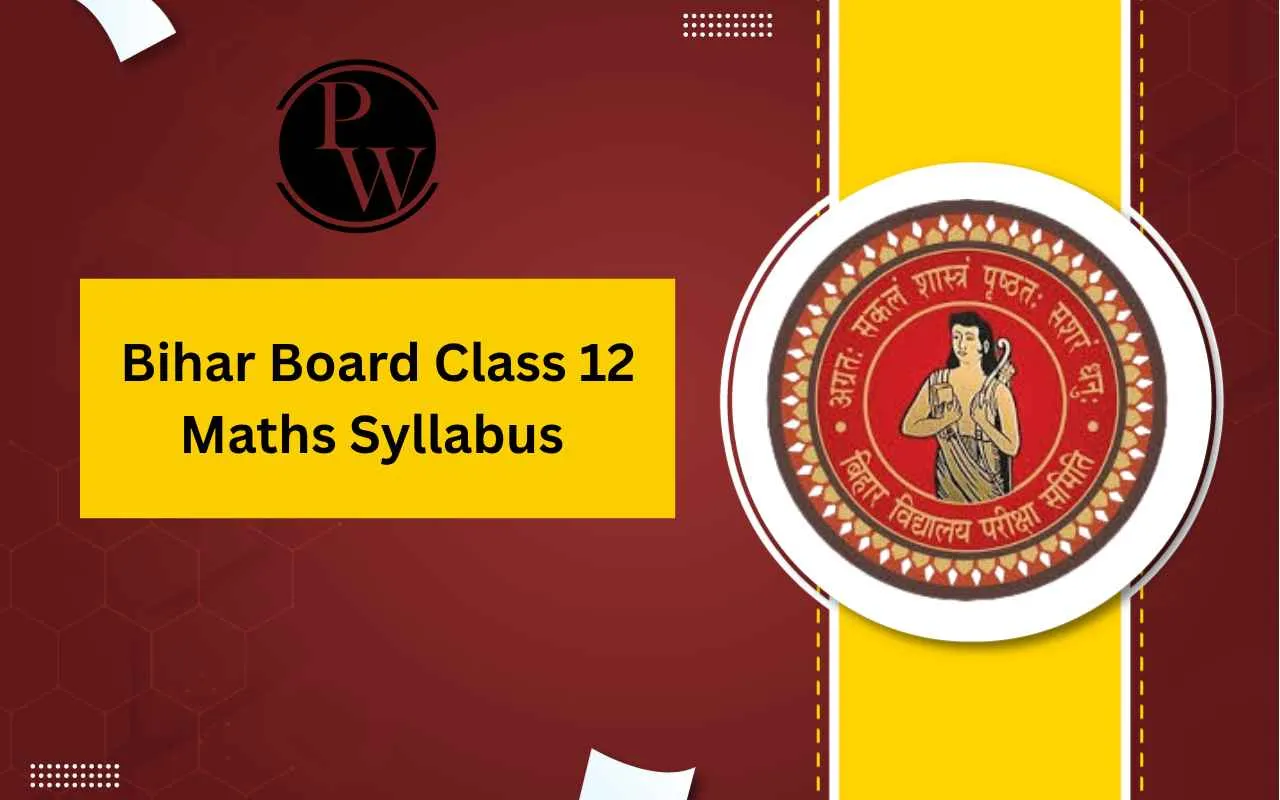
Bihar Board Class 12 Maths Syllabus 2025: Among all subjects, Mathematics is one of the most scoring subjects in Class 12 for students appearing for the Bihar Board exams. It is essential for students to have a clear understanding of the Bihar Board Class 12 Syllabus to begin their board exams preparation.
The Bihar Board Class 12 Maths Syllabus 2025 focuses on important concepts like Calculus, Vectors and 3D Geometry to help students strengthen conceptual clarity and problem-solving skills. It also includes internal assessments and practical activity work to evaluate theoretical knowledge.
Bihar Board Class 12 Science Syllabus
Bihar Board Class 12 Maths Syllabus 2025 Overview
Bihar Board Class 12 Maths Syllabus 2025 includes a written exam of 80 marks, and the remaining 20 marks for internal assessments, which include tests, activities, and project work. Here’s an overview of the Maths syllabus structure for Bihar Board Class 12:
|
Bihar Board Class 12 Maths Syllabus 2025 Overview |
|
|
Particulars |
Details |
|
Conducting Board |
Bihar School Examination Board (BSEB) |
|
Subject |
Maths |
|
Total Marks (Theory) |
80 Marks |
|
Internal Assessment |
20 Marks |
|
Total Units |
6 |
|
Recommended Books |
NCERT + Exemplar |
|
Question Types |
VSA, SA, LA I, LA II |
|
Official Website |
|
Bihar Board Class 12 Chemistry Syllabus
Bihar Board Class 12 Maths Syllabus 2025 Exam Pattern
Bihar Board gives a clear overview of the Bihar Board 12th Exam Pattern for math to help students prepare for the board exams thoroughly. The Bihar Board Class 12 Maths paper is divided into four question types: Very Short Answer (VSA), Short Answer (SA), Long Answer-I (LA I), and Long Answer-II (LA II). Each question type is given a separate mark weightage and a set number of questions. Here is the Bihar Board Class 12 Maths Syllabus 2025 Exam Pattern:
|
Bihar Board Class 12 Maths Syllabus 2025 Exam Pattern |
|||
|
Type of Question |
Marks per Question |
Number of Questions |
Total Marks |
|
Very Short (VSA) |
1 |
20 |
20 |
|
Short Answer (SA) |
2 |
6 |
12 |
|
Long Answer – I |
4 |
6 |
24 |
|
Long Answer – II |
6 |
4 |
24 |
|
Total |
— |
36 |
80 |
Bihar Board Class 12 English Syllabus
Bihar Board Class 12 Maths Syllabus 2025 Marking Scheme
Bihar Board Class 12 Maths Syllabus 2025 Marking Scheme is included in the syllabus, allowing students to understand the high weightage units which should be prioritized. The syllabus includes a total of six units and the highest marks weightage is given to Calculus, which carries 35 marks. This unit includes topics like continuity, differentiability, applications of derivatives, integrals, and differential equations.
Units like Algebra and Vectors & 3D Geometry, Relations & Functions, Probability, and Linear Programming are also included in the syllabus. This unit-wise distribution allows students to focus on high-weightage topics first and revise low-weightage topics without stress.
|
Bihar Board Class 12 Maths Syllabus 2025 Marking Scheme |
|||
|
Unit No. |
Unit Name |
Chapter Names |
Marks |
|
I |
Relations and Functions |
Relations and Functions: Types of relations: reflexive, symmetric, transitive and equivalence relations. One to one andonto functions, composite functions, inverse of a function. Inverse Trigonometric Functions: Definition, range, domain, principal value branch. Graphs of inversetrigonometric functionsElementary properties of inverse trigonometricfunctions. |
08 |
|
II |
Algebra |
Matrices: Concept, notation, order, equality, types of matrices, zero and identity matrix, transpose of a matrix, symmetric and skew symmetric matrices. Operation on matrices: Addition and multiplication and multiplication with a scalar. Simple properties of addition, multiplication and scalar multiplication. Non- commutativity of multiplication of matrices and existence of non-zero matrices whose product is the zero matrix (restrict to square matrices of order 2).Concept of elementary row and column operations. Invertible matrices and proof of the uniqueness of inverse, if it exists; (Here all matrices will have real entries). Determinants: Determinant of a square matrix (up to 3 x 3 matrices), properties of determinants, minors, co-factors and applications of determinants in finding the area of a triangle. Adjoint and inverse of a square matrix. Consistency, inconsistency and number of solutions of system of linear equations by examples, solving system of linear equations in two or three variables (having unique solution) using inverse of a matrix. |
10 |
|
III |
Calculus |
Continuity and Differentiability: Continuity and differentiability, derivative of composite functions, chain rule, derivative of inverse trigonometric functions, derivative of implicit functions. Concept of exponential and logarithmic functions. Derivatives of logarithmic and exponential functions. Logarithmic differentiation, derivative of functions expressed in parametric forms. Second order derivatives. Rolle’s and Lagrange's Mean Value Theorems (without proof) and their geometric interpretation. Applications of Derivatives: Applications of derivatives: rate of change of bodies, increasing/decreasing functions, tangents and normals, use of derivatives in approximation, maxima and minima (first derivative test motivated geometrically and second derivative test given as a provable tool). Simple problems (that illustrate basic principles and understanding of the subject as well as real-life situations). Integrals: Integration as inverse process of differentiation.Integration of a variety of functions by substitution, by partial fractions and by parts, Evaluation of simple integrals of the following types and problems based on them. Definite integrals as a limit of a sum, Fundamental Theorem of Calculus (without proof).Basic properties of definite integrals and evaluation of definite integrals. Applications of the Integrals: Applications in finding the area under simple curves, especially lines, circles/ parabolas/ellipses (in standard form only), Area between any of the two above said curves (the region should be clearly identifiable). Differential Equations: Definition, order and degree, general and particular solutions of a differential equation.formation of differential equation whose general solution is given. Solution of differential equations by method of separation of variables, solutions of homogeneous differential equations of first order and first degree. |
35 |
|
IV |
Vectors and 3D Geometry |
Vectors: Vectors and scalars, magnitude and direction of a vector.Direction cosines and direction ratios of a vector. Types of vectors (equal, unit, zero, parallel and collinear vectors), position vector of a point, negative of a vector, components of a vector, addition of vectors, multiplication of a vector by a scalar, position vector of a point dividing a line segment in a given ratio. Definition, Geometrical Interpretation, properties and application of scalar (dot) product of vectors, vector (cross) product of vectors, scalar triple product of vectors. Three - dimensional Geometry: Direction cosines and direction ratios of a line joining two points.Cartesian equation and vector equation of a line, coplanar and skew lines, shortest distance between two lines.Cartesian and vector equation of a plane.Angle between (i) two lines, (ii) two planes, (iii) a line and a plane.Distance of a point from a plane. |
14 |
|
V |
Linear Programming |
Linear Programming: Introduction, related terminology such as constraints, objective function, optimization, different types of linear programming (L.P.) problems, mathematical formulation of L.P. problems, graphical method of solution for problems in two variables, feasible and infeasible regions (bounded or unbounded), feasible and infeasible solutions, optimal feasible solutions (up to three non-trivial constraints). |
05 |
|
VI |
Probability |
Probability: Conditional probability, multiplication theorem on probability, independent events, total probability, Bayes’ theorem, Random variable and its probability distribution, mean and variance of random variable. |
08 |
|
Total |
80 |
||
Bihar Board Class 12 Computer Science Syllabus
Bihar Board Class 12 Maths Syllabus 2025 Practical Assessment
Bihar Board Class 12 Maths Practical Assessment 2025 carries a total of 20 marks, divided between periodic tests and mathematics activities. Students are assessed based on the best two out of three periodic tests conducted during the year, contributing 10 marks.
The remaining 10 marks are allocated for mathematics activities, which must be selected from the NCERT Laboratory Manual (Class XI or XII). Here is the marking scheme for practical assessment:
|
Bihar Board Class 12 Maths Practical Assessment 2025 Marking Scheme |
||
|
Component |
Details |
Marks |
|
Periodic Tests |
Best 2 out of 3 tests conducted |
10 Marks |
|
Mathematics Activities |
As per NCERT Lab Manual (any 10 activities) |
10 Marks |
|
— Activity performance & record keeping |
Maintaining activity file and completing tasks throughout the year |
5 Marks |
|
— Year-end test on activities |
Assessment conducted at school level |
3 Marks |
|
— Viva-voce |
Oral examination based on activities and concepts |
2 Marks |
|
Total |
20 Marks |
|
Bihar Board Class 12th Model Papers
Bihar Board Class 12 Maths Syllabus 2025 Recommended Books
The Bihar Board strictly follows NCERT textbooks as they are known for their clarity and wide coverage of topics. The names of the prescribed books are also mentioned in the syllabus. Here is the list of prescribed books to be included for preparation of board exams:
-
Mathematics Textbook for Class XI, NCERT Publications
-
Mathematics Part I - Textbook for Class XII, NCERT Publication
-
Mathematics Part II - Textbook for Class XII, NCERT Publication
-
Mathematics Exemplar Problem for Class XI, Published by NCERT
-
Mathematics Exemplar Problem for Class XII, Published by NCERT
-
Mathematics Lab Manual class XI, published by NCERT
-
Mathematics Lab Manual class XII, published by NCERT
How to Prepare for Bihar Board Class 12 Maths Exam 2025?
-
As the third unit, Calculus is high scoring i.e., carrying 35 marks, so, focus on understanding chapters like Differentiation, Applications of Derivatives, Integration, and Area Under Curves. These chapters are high-scoring and are repeated every year. Practice maxima-minima, tangent-normal problems, and definite integrals daily.
-
For chapters like Matrices, Determinants, Probability, and Vector Algebra, formulas are important. Write all important identities, properties, and standard results in one place and revise daily. Especially for 3D Geometry, you can keep a list of direction ratios, cosines, and distance formulas and revise them daily.
-
Give importance to units in which you can easily score like Linear Programming (5 marks) and Relations & Functions (3 marks). Probability (8 marks) is formula-based, so simply memorizing the formula can help you score well.
-
To score well in the board exams, you must practice the previous years papers as it will help you understand the exam pattern and frequently repeated chapters like Determinants and Matrices.
-
Just solving and practicing questions won’t be beneficial. You must focus on the weak areas by analyzing your mistakes. Revise the basics again and attempt questions based on the specific chapters to gain mastery in them.
|
Bihar Board Related link |
|
Bihar Board Class 12 Maths Syllabus 2025 FAQs
What is the latest Bihar Board Class 12 Maths Syllabus 2025?
How many marks are allotted to each unit in Bihar Board Class 12 Maths?
What is the exam pattern for Bihar Board Class 12 Maths 2025?
Is there any change in the Bihar Board Class 12 Maths syllabus compared to last year?
Where can I download the Bihar Board Class 12 Maths Syllabus 2025 PDF?

